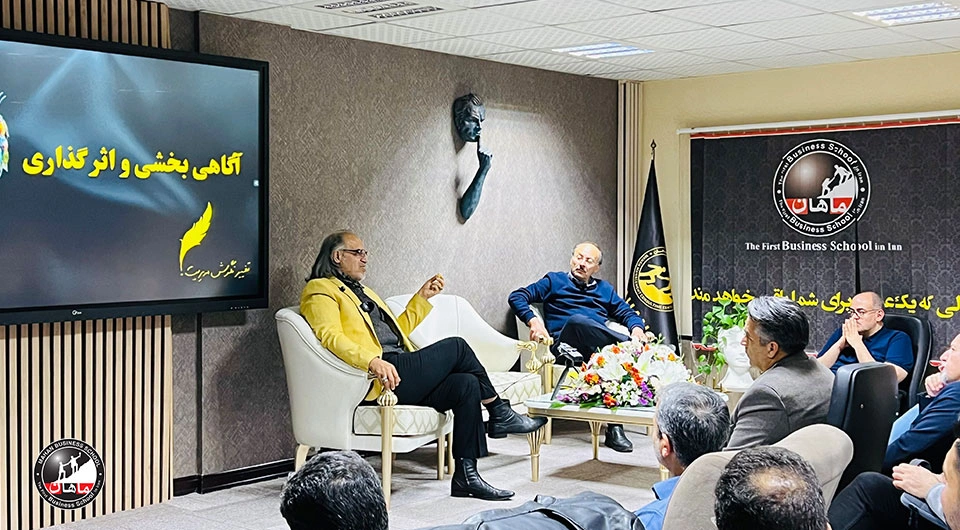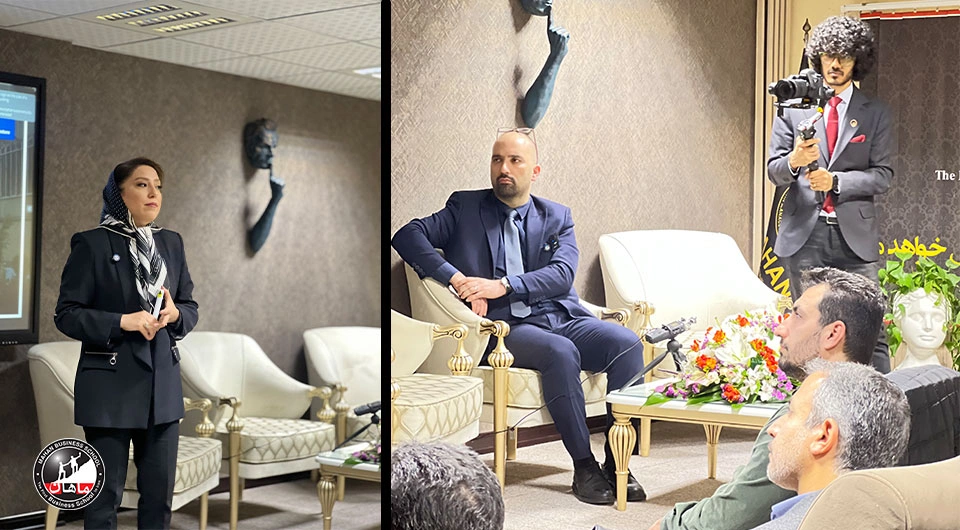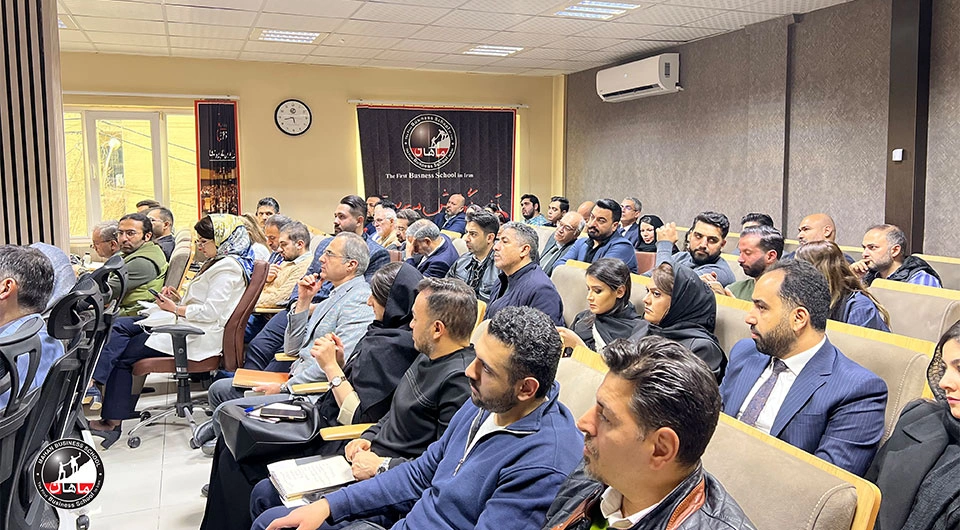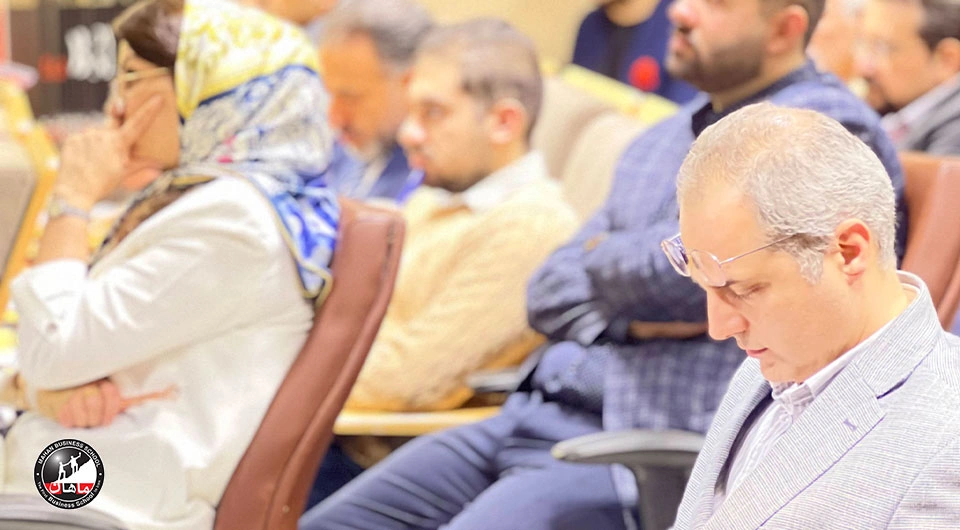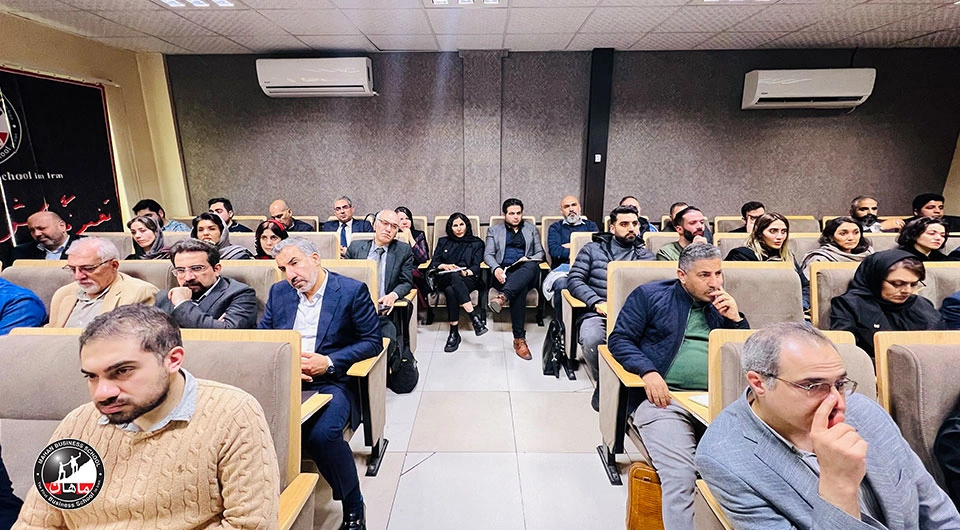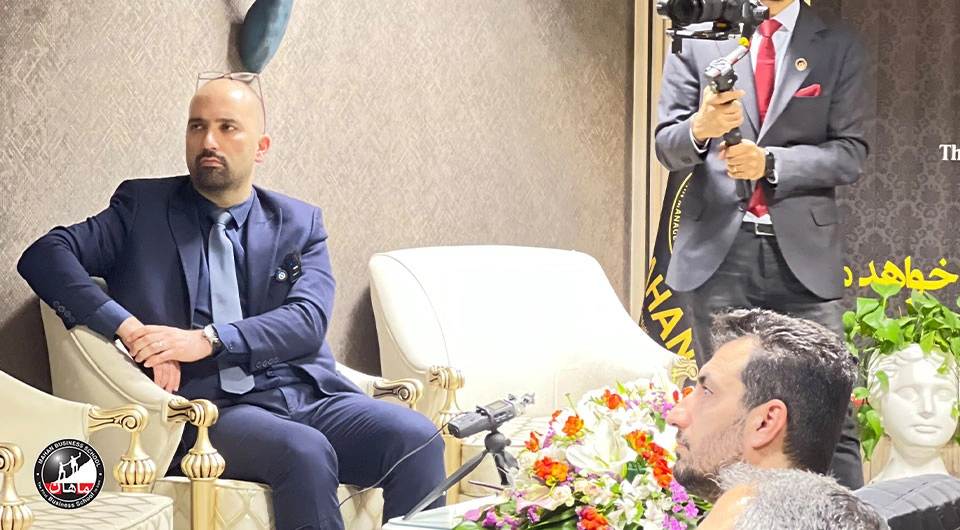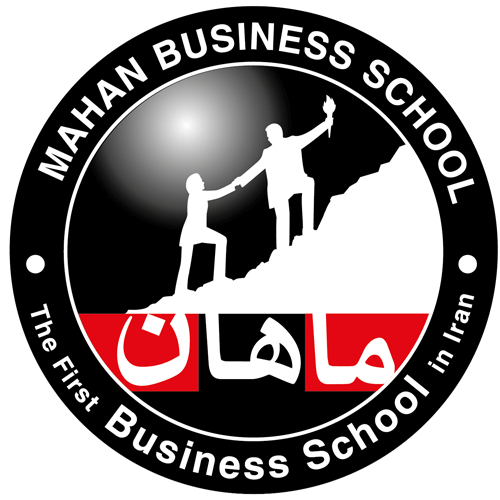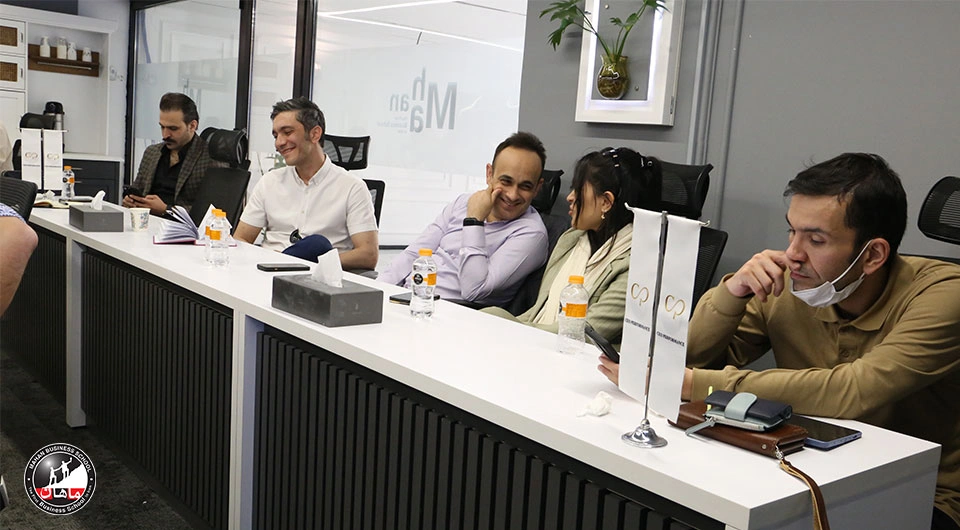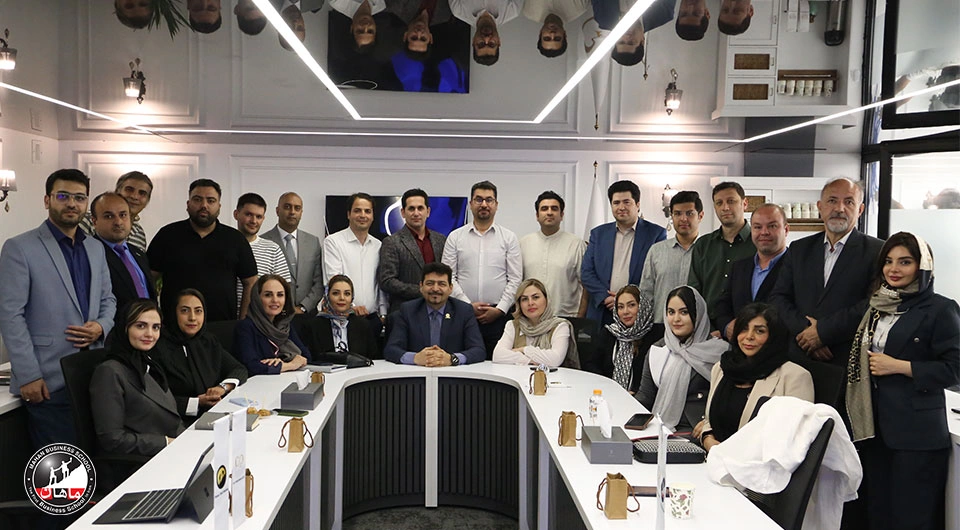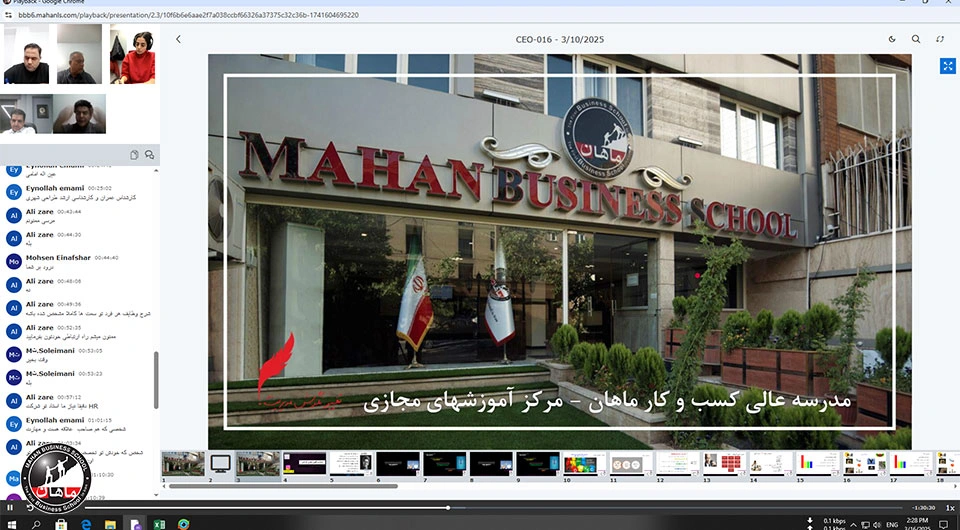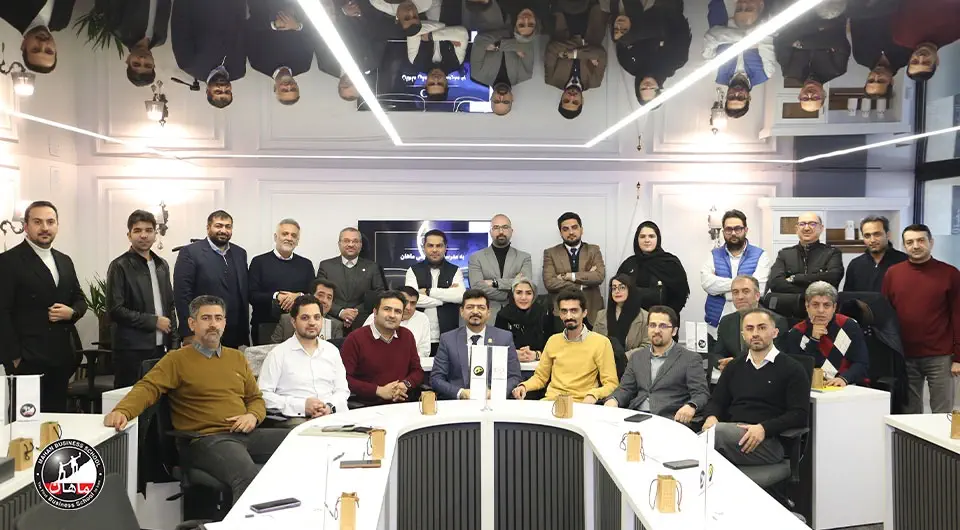Dr. Hassan Hosseini (Faculty Member of Mahan Business School): Financing in Iran
Dr. Hosseini analyzed the state of financing in Iran. In this report, he examined the financing challenges in 1404 (Iranian calendar year) and emphasized that given the unfavorable condition of the money market and the limited access to banking resources, economic actors must seek alternative solutions to finance their businesses. He said: “When we want to borrow money, the first point is how much money we can generate through the money we borrow. If the cost of borrowing exceeds our ability to compensate, it results in a loss.”
Financing through the capital market
Dr. Hosseini stated:
• The market value of debt securities in the Tehran Stock Exchange in 1402 was 1,179,561 billion rials. This figure has not changed significantly compared to the end of 1401.
• The market value of new financial instruments in Iran’s Over-the-Counter (OTC) market in 1402 was 8,366,489 billion rials, showing a 0.52% decrease compared to the end of 1401.
• The total market value of debt securities in 1402 was 9,546,050 billion rials, representing a 25.26% decrease compared to the previous year.
• The largest share of debt securities issuance belonged to government bonds, constituting 44.7% of the total bonds issued in 1402.
• Municipal bonds also held a significant share of the debt securities market, accounting for 12.1% of the total bonds issued in 1402.
• Corporate bonds accounted for 1.2% of the total bonds issued in 1402.
• In the last 30 days, 115 financing projects have been funded by 106 companies and 30 platforms. The total amount financed during this period was 1,691 billion tomans.
• The average annual interest rate in the crowdfunding market was 42%.
• Since the inception of the crowdfunding market, 1,184 projects have been financed by 589 companies and 40 platforms. The total amount financed so far has been 158,824 billion tomans.
The equity-based financing instruments, according to Dr. Hosseini, were as follows:
• Project Fund: These funds are used to finance large and infrastructure projects.
• Venture Fund: These funds help startups and young companies secure the capital needed for their growth and development.
• Land and Building Fund: These funds are used to finance construction and real estate projects.
In the first 10 months of the year 1403, loans have been granted in various sectors including employment interest-free loans, marriage interest-free loans, and housing purchase loans. The largest portion of loans granted was related to the purchase of new housing.
Leasing, as a forgotten anti-inflation tool, provides credit facilities to individuals and legal entities active in various sectors including industry, mining, transportation, and medical equipment.
Dr. Hosseini believed that financing in Iran is carried out through various instruments such as the capital market, money market, and crowdfunding. However, challenges such as high interest rates, decline in the market value of debt securities, and limited access to financial resources exist. To improve the financing situation in Iran, structural reforms and the development of new financing tools are needed.
Suggestions
- Developing new financing tools: Using tools such as crowdfunding and venture funds can help develop businesses and startups.
- Lower interest rates: Lower interest rates in the financing market can help increase demand for facilities and improve the economic situation.
- Transparency in the debt securities market: Increasing transparency in the debt securities market can help attract more investors and increase the liquidity of this market.
Ms. Shirin Hosseinzadeh (Coach and Instructor at Mahan Business School): Year-End Actions and Tax Management for Managers
She presented strategies for improving tax management and preparing for the new fiscal year.
According to her speech, the level of managers’ mastery of tax laws is as follows:
• Managers should be familiar with specific tax topics and risks related to their industry to effectively manage tax risks.
• Awareness of the Tax Administration’s forecasts regarding industry profit levels can help managers better plan tax management.
• Mastery of tax laws and regulations related to contracts is essential to avoid any legal issues.
• Defining processes and internal controls with the help of expert and experienced professionals can ensure proper implementation of tax laws.
• Utilizing the knowledge and potential of the finance unit in decision-making can improve tax management.
• Accompanying a coach or tax advisor can help managers better manage taxes and reduce tax risks.
• Familiarity with tax litigation procedures can help managers act effectively in case of tax disputes.
Year-end actions that managers must take:
• Ensuring the closing of accounts: Managers must ensure that all accounts are properly closed and there are no discrepancies.
• Managing sales during the year-end days: Planning to manage sales during the year-end days is essential considering the limitations of the taxpayer system.
• Audit contract: The audit contract and required year-end inspections must be done on time. Conducting an audit before submitting the tax return can help identify and resolve potential issues.
• Reviewing financial statement ratios: Reviewing financial statement ratios and taking necessary actions at year-end can help improve the company’s financial situation.
• Preparation for the new fiscal year: Managers should be prepared to start the new fiscal year considering changes in regulations.
The upcoming legal changes and mandatory actions are as follows:
• Conversion of physical legal books to electronic: Managers must assess needs and diagnose processes and internal controls to be prepared for converting physical legal books to electronic format.
• Extension of the Taxpayer System Facilitation Law: Managers should be aware of the inclusion of individuals in the taxpayer system and take necessary actions.
• Budget Law of 1404: Studying the tax provisions of the 1404 budget can help managers better plan for the upcoming year.
• Sensitivity to banking transactions: Managers must pay attention to the separation of identity and financial dealings of related individuals to prevent any tax issues.
• Tax management in business development: Managers should effectively manage taxes during the growth and expansion of their business and not allow taxes to act as a deterrent.
Ms. Hosseinzadeh’s Emphasis: Separation of Ownership and Management Roles
The speaker emphasized that managers should always act as the “business manager” rather than the “business owner.” This role separation helps ensure decisions are made based on the business’s interests rather than personal interests. Combining personal and business interests can lead to poor decisions and increased tax risks. Therefore, managers should always remember to prioritize their role as managers over owners in the realm of taxation.
Suggestions
- Training and awareness: Managers must be continuously trained on changes in tax laws and be aware of the latest developments.
- Using tax advisors: Working with tax advisors can help managers better manage taxes and reduce tax risks.
- Systemization and internal controls: Defining internal processes and controls can help ensure the proper implementation of tax laws.
- Planning for the new fiscal year: Managers must make the necessary plans for the new fiscal year in accordance with changes in regulations.
- Separation of ownership and management roles: Managers should always act as the business manager and avoid mixing personal interests with business interests.
Professor Farid Esmaeilian (Director of the Consulting Center and Faculty Member of Mahan Business School)
Mr. Farid Esmaeilian, Director of the Consulting Center and faculty member of Mahan Business School, provided a comprehensive analysis of Iran’s economic situation for the coming year. He highlighted key challenges facing the country’s economy, citing reduced economic growth, rising inflation, and decreased oil revenues as the most significant factors impacting Iran’s economy in 1404.
Esmaeilian stated in part of his speech: “Iran’s economic growth in 1404 has decreased from 5.5% to 1.6%. This decline is due to continued contractionary policies, reduced investment, and weakness in the demand side of the economy.” He also added: “The budget deficit is predictable for the next year, especially considering the decline in oil revenues which has put significant pressure on the country’s budget.”
He then addressed inflation, saying: “Inflation in 1404 has stopped its downward trend and has increased to a level between 40% and 50%. This rise is due to the decrease in real interest rates and signals sent to asset markets.” Esmaeilian also mentioned the increase in energy prices as one of the factors intensifying inflation.
Regarding interest rates, he said: “Interest rates will rise next year. This increase is due to persistent inflation and long-term economic processes that act as the main driving force of inflation.”
Esmaeilian also pointed to the rise in exchange rates, saying: “The currency price has increased in 1404. This increase is caused by the attractiveness of investment in non-rial assets and recession in rial markets.” He further added: “Monetary contraction and continued economic stagnation have also fueled the currency price increase.”
In summarizing his analysis, Esmaeilian said: “Iran’s economy will face serious challenges in 1404. Reduced economic growth, rising inflation, and declining oil revenues are among the most important of these challenges. Continued contractionary policies and rising interest rates will also exacerbate these problems.”
He emphasized: “To improve the economic situation, structural reforms and adoption of more efficient economic policies are necessary. The golden key is that the budget dictates everything and forecasts are shaped accordingly.”
The golden key of Mr. Esmaeilian’s remarks was that the budget dictates everything and makes the predictions.
Dr. Emad Kousha: Analysis of the Warsaw Market, Forex, and Cryptocurrencies (Instructor at Mahan Business School)
Dr. Koosha’s report covered the analysis and forecasting of financial markets including the stock market, Forex, and cryptocurrencies in the year 1404 (2025/2026). This analysis was conducted with a focus on key indicators and market trends and includes examination of the capital market, interest rates, inflation, and the cryptocurrency market.
Key points from his speech are as follows:
• In 1404, capital market indices experienced significant fluctuations. Indices such as YY,5+T and TY,7+A indicate different trends in the market.
• Money flow at various time intervals indicates changes in individual and institutional investments. These changes can impact the overall market trend.
• Technical analysis of the overall index shows upward and downward trends in the market. This analysis helps investors identify suitable entry and exit points.
• Inflation rate in the US has shown an upward trend in recent years. It is predicted that this trend will continue in 1404.
• Interest rates in the US are also influenced by inflation and Federal Reserve monetary policies. Rising interest rates can affect the Forex market and the value of the dollar.
• US Dollar Index (DXY): Technical analysis of the US dollar index shows upward and downward trends in the dollar’s value. This analysis helps investors forecast changes in the Forex market.
• Bitcoin ETF trading volumes have increased significantly in 1404. This increase reflects growing investor interest in the cryptocurrency market.
• The market share of Bitcoin ETFs is also rising. This trend indicates greater acceptance of cryptocurrencies in traditional financial markets.
• Bitcoin analysis shows upward and downward trends in the price of this cryptocurrency. This analysis helps investors identify suitable entry and exit points.
In the year 1404, financial markets face numerous challenges and opportunities. The stock market experiences significant fluctuations, while the Forex market is influenced by interest rates and inflation in the US. The cryptocurrency market also sees considerable growth in trading volume and acceptance of Bitcoin ETFs.
Suggestions
Dr. Koosha offered solutions for investors:
- Investors should manage their risks by using technical and fundamental analyses.
- Diversifying the investment portfolio can help reduce risk and increase returns.
- Continuous monitoring of the market and changes in key indicators can help investors make better decisions.
Dr. Mostafa Sadegh (Instructor at Mahan Business School): Analyzing the Structure of Iran’s Economy Throughout History
Dr. Sadegh analyzed the structure of Iran’s economy from historical and institutional perspectives. The purpose of this report is to examine the historical roots of Iran’s economic problems and analyze the institutions that have influenced the formation and development of Iran’s economy over time. This analysis includes reviewing the production structure, trade balance, wealth-creating and wealth-destroying institutions, and the impact of economic policies on the country’s development.
Dr. Sadegh stated: Liquidity in Iran’s economy has always increased, but business returns and real yields have been close to zero. This structural imbalance has discouraged foreign capital from entering Iran.
On the other hand, Iran’s production structure cannot meet domestic needs and does not experience sustainable economic growth. Growth has been volatile and poverty-inducing, and development remains inaccessible. GDP growth is expected to remain limited.
Iran’s production structure depends on imports, and export development faces serious challenges. This dependence on imports has prevented Iran’s economy from achieving comparative and absolute advantages in the global value chain; the production structure cannot maintain full employment of production factors. This has led to increased structural unemployment.
He further noted: Structural inflation has caused the exchange rate to have a long-term upward trend. It is predicted that the exchange rate will continue to rise. Inflation in Iran has always been high, reducing welfare and shrinking household consumption baskets.
Wealth-creating and wealth-destroying institutions
Wealth-destroying institutions
Economic policies implemented at policymakers’ discretion often lead to a reduction in wealth and economic power. These policies include violations of private property, monopolization, and coercion.
Throughout history, there have been institutions that, instead of creating wealth, have plundered economic resources. These institutions have caused a decrease in capital accumulation and hindered the development of necessary infrastructure for sustainable growth.
Wealth-creating institutions
Institutions based on law, democracy, and freedom of action can help create wealth and prosperity. These institutions include transparency, private property rights, and restrained policymakers.
Institutions that emphasize creativity and innovation can contribute to economic development. These institutions generate wealth and welfare in society.
Historical Analysis of Economic Institutions
Safavid Era
• During the Safavid era, Shah Abbas I implemented policies to boost trade, which included building roads, caravanserais, and securing the routes. These policies increased trade revenues and strengthened commercial institutions.
• Despite the benefits of Shah Abbas’s trade policies, trade monopolies caused harm to domestic production.
Qajar Era
• During the Qajar era, policies of land grants (tiyul) and granting economic rights to local powers led to decreased property security and increased economic corruption. These policies caused a decline in capital accumulation and hindered the formation of necessary infrastructure for economic development.
From his perspective, the structure of Iran’s economy has faced numerous challenges throughout history. Structural production imbalances, dependence on imports, high inflation, and wealth-destroying institutions are among the most significant of these challenges. To improve the economic situation, structural reforms and the establishment of wealth-creating institutions are necessary.
Suggestions
- Establishing institutions based on law, democracy, and freedom of action can help create wealth and prosperity.
- Reducing dependence on imports and strengthening domestic production can help improve the trade balance and reduce unemployment.
- Increasing transparency in economic policies and combating corruption can help improve property security and attract foreign investments.
Dr. Bijan Abdolkarimi (Philosopher): A Critique of Economic Reality Inspired by the Apparatus Theory
Dr. Bijan Abdolkarimi, a philosopher, addressed economic and political issues from a philosophical perspective. He said, “Iran is our home, and we must be devoted to it. When we witness migration and large capital transfers, it shows that our attachment to this home has weakened.”
Drawing inspiration from philosophical and sociological theories, he examined the concept of economic reality in today’s world. Referring to the theories of Jean Baudrillard and the concept of the “Apparatus,” Dr. Abdolkarimi argued that what we perceive as economic reality is actually constructed and simulated. Comparing the world of economics to a grand cinema, he emphasized that global powers use tools such as media, economic data, and dominant narratives to shape economic reality in ways that serve their interests.
He stated, “The economic reality we see is not necessarily real. This reality is formed based on data, reports, and narratives designed by power systems. In this grand economic cinema, characters of ‘good’ and ‘bad’ (such as successful or failed economies) are defined by the director. Our economic world is a cinema, and cinemas, through their power, utilize data and narratives to tell the stories they want.”
He added, “The Western apparatus system, using media tools, economic data, and technology, reproduces economic reality so that we see the world as they want. This system shapes not only economic reality but even our perception of success and failure, growth and recession.”
Addressing experts, economic analysts, and business activists, Dr. Abdolkarimi emphasized that many of us have unwittingly become trapped in the Western apparatus system. He said, “We see economic data and analyses in the way the Western apparatus system desires. This system, using complex media and data processing tools, shapes our perceptions and traps us in its narratives.”
He urged specialists and analysts to critically rethink and free themselves from this intellectual captivity. Dr. Abdolkarimi concluded, “My recommendation to economic experts and analysts is to seek hidden and untold realities instead of unconditionally accepting dominant narratives. We must free ourselves from this apparatus system and see economic reality as it truly is, not as it is presented to us.”
Dr. Mehdi Motaharnia (Futurist and Political Analyst): The Future of Iran in the Post-1403 Horizon
Dr. Mehdi Motaharnia, a futurist and political analyst, examined the developments in the new global order. He stated, “In the new world order, power is no longer in the hands of politicians but in the hands of individuals like Elon Musk, who transform the world through technological and economic innovations.” Motaharnia also highlighted the role of technology and artificial intelligence in global changes, adding, “The technologies available to us today were used years ago by global powers and are now accessible to the public.”
What currently exists in global developments is a pursuit of the new world order by 2030.
The Future of Iran in the Post-1403 Horizon
Iran stands on the brink of significant economic, political, and social changes. These changes are influenced by both global and domestic developments and have the potential to significantly shape the country’s future.
Social Developments
• Increasing Social and Political Awareness: With expanded access to information and social networks, public awareness has risen, and people’s expectations from the government and politicians have grown.
• Changes in the Role of Women and Youth: Women and youth will play a more prominent role in social, economic, and political arenas in the coming years.
• Impact of Social and Meta-social Networks: Social and meta-social networks will increasingly influence culture, politics, and social relations.
The Political Future of Iran
• Possibility of Changes in Political Structure and Governance: Given internal and external pressures, changes in the political structure and governance methods are possible.
• Role of Youth and Elites in Policy-Making: Youth and elites can play a crucial role in shaping the country’s future by introducing new ideas and actively participating in political processes.
• New Diplomacy and International Relations: Iran requires an active and modern diplomacy to improve international relations and reduce tensions.
Economic Outlook
• Need for Economic Diversification: Iran must diversify its economy to reduce dependence on oil revenues and move toward developing new sectors such as technology, tourism, and creative industries.
• Challenges of Sanctions and Their Impact on Business Opportunities: Sanctions remain one of the biggest economic challenges for Iran, negatively affecting trade and investment opportunities.
• Investment in New Sectors: Investing in areas like renewable energy, information technology, and artificial intelligence can contribute to the country’s economic growth.
Hope for Positive Changes in the Horizon of 1403 to 1407 (2024–2028)
Despite numerous challenges, there is hope for positive changes in the coming years. These changes may include improved international relations, sustainable economic growth, and increased public participation in political processes.
Four Scenarios Ahead for Iran
- Full-scale war:
In this scenario, Iran faces escalating internal and external tensions and conflicts, which could lead to serious crises. - Negotiation and Agreement:
In this scenario, Iran pursues active diplomacy and negotiations with global powers, reaching new agreements that could help reduce tensions and improve the economic situation. - Limited Tensions: Cold War and Uncertainty:
In this scenario, Iran remains in a semi-stable state where tensions persist but do not escalate into a full-blown crisis. - Unexpected Cooperation:
In this scenario, Iran achieves improvement in relations and creates new opportunities through unexpected cooperation with the United States.
